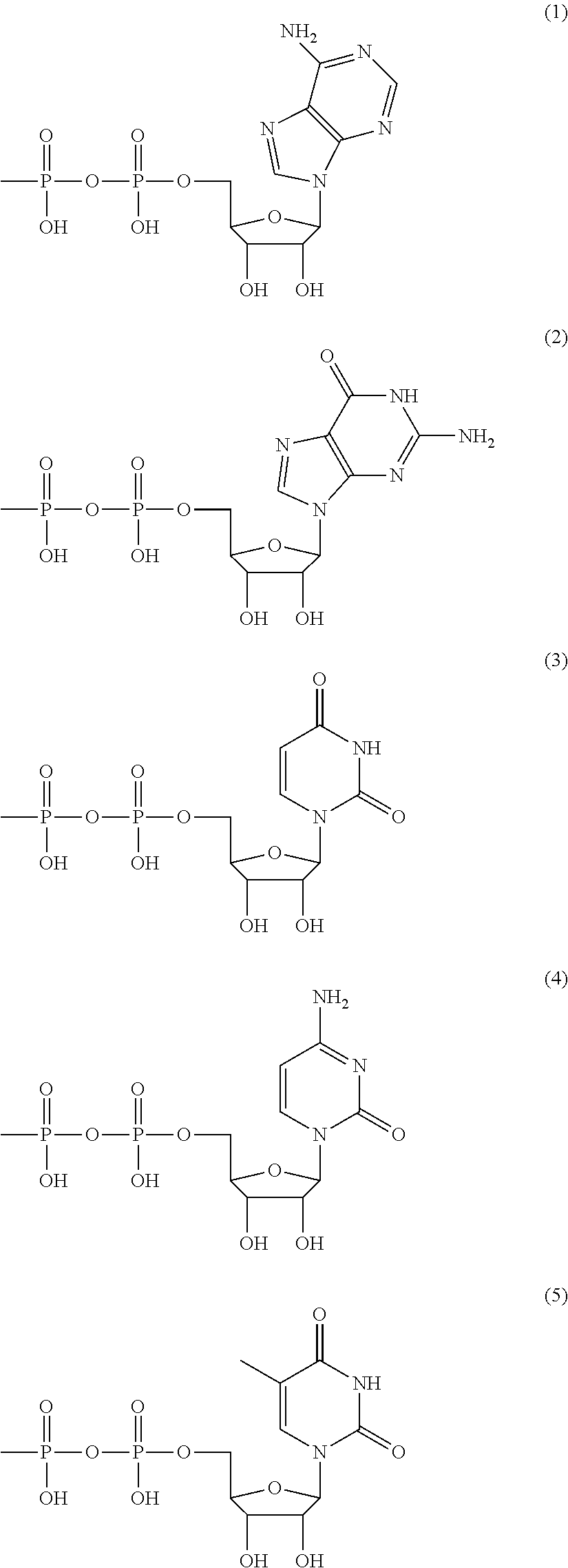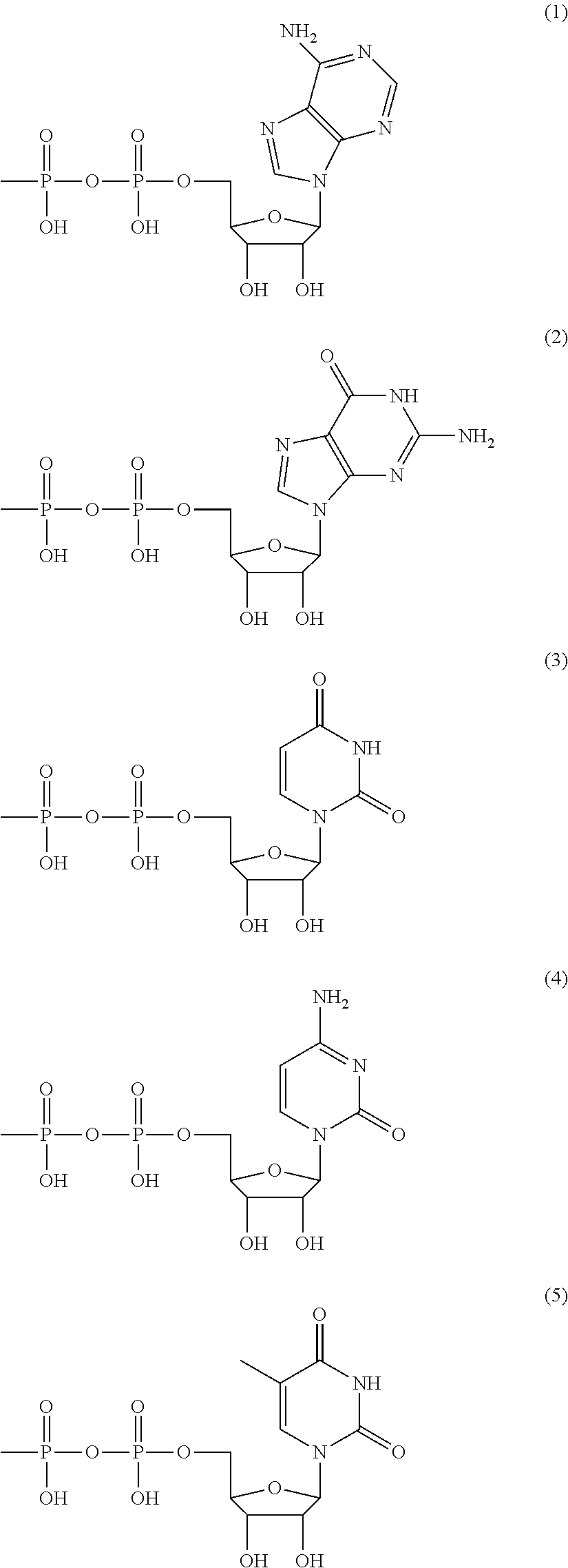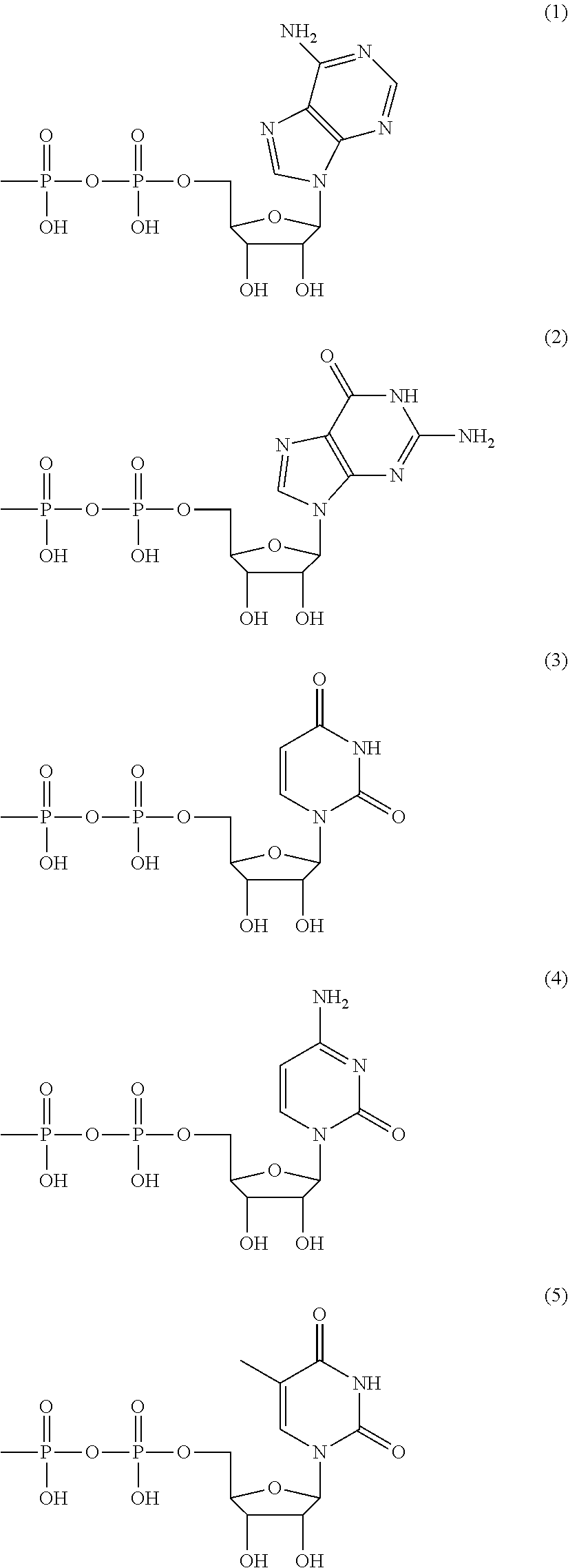Method for producing polysaccharide
a polysaccharide and polysaccharide technology, applied in the direction of fermentation, etc., can solve the problems of hyaluronan production ending, difficult stir for aeration, complicated purification process, etc., and achieve the effect of high yield of polysaccharide per unit enzym
- Summary
- Abstract
- Description
- Claims
- Application Information
AI Technical Summary
Benefits of technology
Problems solved by technology
Method used
Image
Examples
examples
[0188]The present invention is described in further detail below with reference to examples and comparative examples, but the present invention is not limited thereto.
preparation 1
[0189]A gene encoding the amino acid sequence of SEQ ID NO: 1 derived from Streptococcus equisimilis was fused with a FLAG tag, and this gene was incorporated into a plasmid (pKK223-3). The plasmid was then transformed into Escherichia coli (E. coliSURE), followed by culturing at 30° C. for 5 hours. Expression was induced when the turbidity of the culture medium reached 0.5 (turbidimeter: “UV-1700” available from Shimadzu Corporation, 1 mL of quartz cell). Subsequently, Escherichia coli was recovered using a centrifuge (“5922” available from KUBOTA Corporation (hereinafter the same), 4° C., 6000×g, 15 min). The recovered Escherichia coli was resuspended in buffer solution A (100 mM phosphate buffer (pH of 7.0) containing 100 mM sodium chloride, 10 mM magnesium chloride, 10 mM dodecylmaltoside, and 5 mM oleic acid), followed by ultrasonic fragmentation (130 W, 10 min) and then purification on an anti-FLAG antibody column. Thereby, hyaluronan synthase aqueous solution (B-1) was obtain...
preparation 2
[0201]Sucrose synthase aqueous solution (D7-1) was obtained in a similar manner as in Preparation 1, except that a “gene encoding the amino acid sequence of SEQ ID NO: 2 derived from Vicia faba” was used in place of the “gene encoding the amino acid sequence of SEQ ID NO: 1 derived from Streptococcus equisimilis”.
[0202]Reaction solution (2) was prepared by adding 10 μL of 1 M sucrose aqueous solution and 10 μL of sucrose synthase aqueous solution (D7-1) to 1 mL of aqueous solution R (50 mM phosphate buffer (pH of 7.0) containing 100 mM sodium chloride, 10 mM magnesium chloride, and 1 mM uridine diphosphate). Three such reaction solutions (2) were prepared and allowed to react at 30° C. for 5 minutes, 10 minutes, and 15 minutes, respectively. As for the amount of compound (C-7) as the reaction product (uridine diphosphate-glucose), the reaction product was developed on TLC (PEI-Cellulose plate available from Sigma-Aldrich Corporation, hereinafter the same) (developing solvent: an aq...
PUM
| Property | Measurement | Unit |
|---|---|---|
| molecular weight | aaaaa | aaaaa |
| molar concentration | aaaaa | aaaaa |
| temperature | aaaaa | aaaaa |
Abstract
Description
Claims
Application Information
 Login to View More
Login to View More - R&D
- Intellectual Property
- Life Sciences
- Materials
- Tech Scout
- Unparalleled Data Quality
- Higher Quality Content
- 60% Fewer Hallucinations
Browse by: Latest US Patents, China's latest patents, Technical Efficacy Thesaurus, Application Domain, Technology Topic, Popular Technical Reports.
© 2025 PatSnap. All rights reserved.Legal|Privacy policy|Modern Slavery Act Transparency Statement|Sitemap|About US| Contact US: help@patsnap.com



